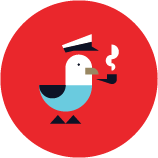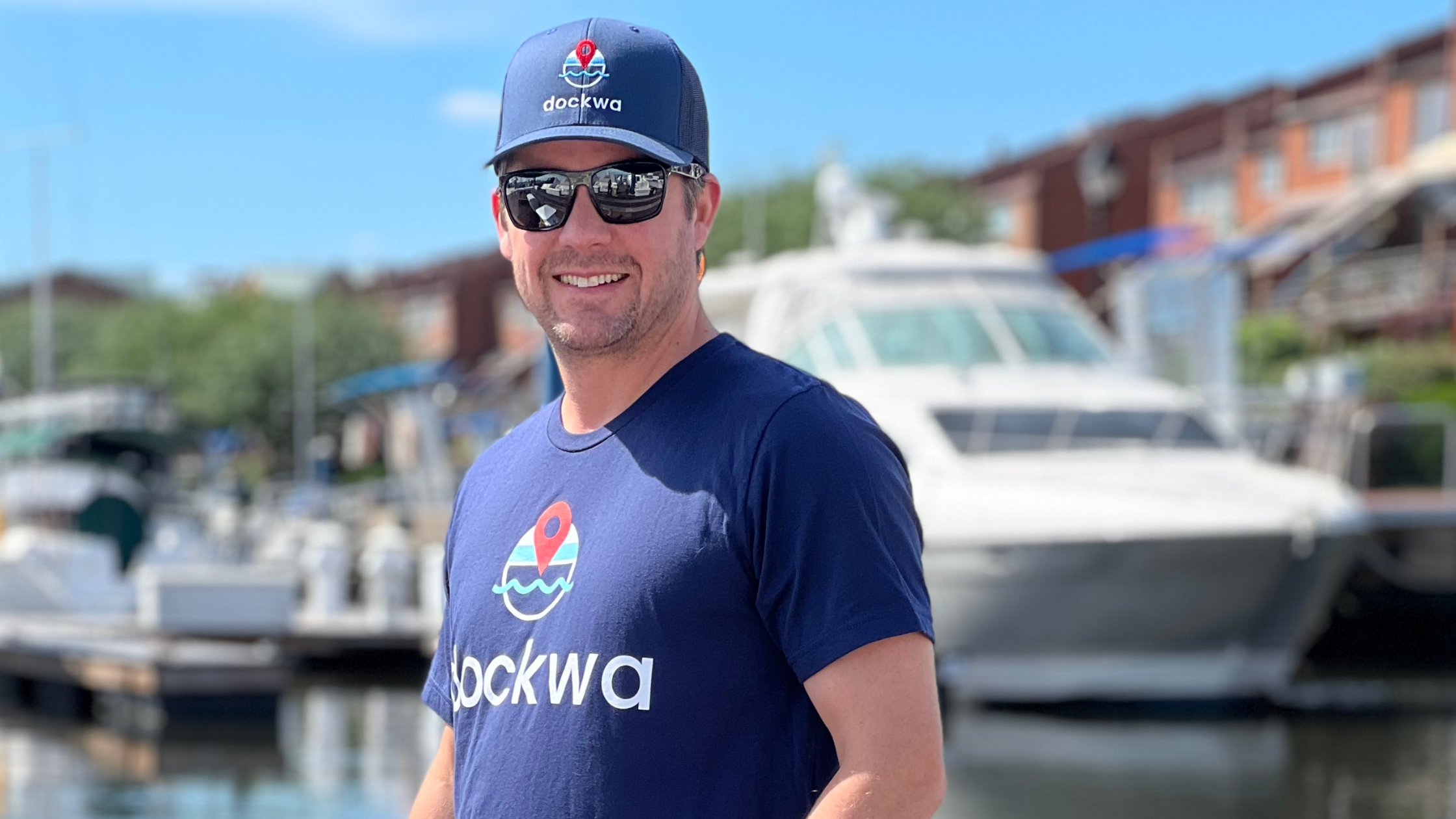During her Great Loop cruise, Maria Langer noticed a common pattern among cruising couples: one person typically captains the boat, while the other handles dock lines and other onboard tasks. However, in the event of an emergency, it’s vital for the first mate to be prepared to take control. This article outlines six essential skills that every first mate should know, from basic boat operation and calling for help on the radio to administering first aid. By learning these skills, first mates can confidently manage a crisis and ensure the safety of the boat and crew.
Six Things Every First Mate Should Know
By Maria Langer
I finished my mostly solo Great Loop cruise in August, meeting lots of Great Loop cruisers along the way. The vast majority of them were couples — men and women — of retirement age. In most cases, one person (usually the man) was in charge of operating the boat and the other person (usually the woman) was in charge of handing lines while docking and doing things inside the boat. (There were notable exceptions to this pattern, but I’ll save that for another article.) I noticed lots of “marriage savers” — those headsets that make it possible to communicate without shouting — and I think that’s a great idea for any team.
.jpg)
I use the word “team” because these folks worked together when docking, anchoring, or tying to a mooring ball — all tasks that are best done with two or more people. But how much of the other boat operation duties did they share? In most cases, very few. The “captain” drove the boat and the “first mate” took care of things inside the boat.
In chatting with some of these couples, a pattern emerged. In more cases than I could count, the first mate knew nothing at all about operating the boat and didn’t care to learn. After all, the captain was doing a fine job and liked doing it. This setup was working for them and there was no reason to change.
But what all of these couples were overlooking was the need for the first mate to know more and be able to take action — possibly without guidance — in the event of an emergency. When the captain is suddenly incapacitated in any way, the first mate needs to be able to step up and handle the situation calmly and safely.
And that’s what this list, presented in no particular order, is all about. This is what every first mate, regardless of age or gender, should know — in addition to helping out with docking and anchoring tasks — when cruising.
The Emergency
Before I get into the list, let me give you a few emergency situations to think about.
- The captain falls overboard.
- The captain has a fall on board and breaks a bone.
- The captain has a fall on board and hits his head hard enough to lose consciousness.
- The captain has a stroke or heart attack and cannot communicate.
These are all serious things that can and have happened. The first mate needs to be prepared to handle any of these situations. This list is a good starting point.
1. How to Drive the Boat
This seems like a big ask, but it’s really not. I’m not suggesting that the first mate develop the same skills the captain might have for controlling the boat — although in a perfect world, that would be great!
I think the first mate needs to know how to use the basic helm controls: steering wheel, throttle(s), and gear shift(s). The first mate should understand how to disengage the autopilot, which might be necessary before being able to actually change course, and how to shut off the engine, which might be vital in a man overboard situation. And how to use the horn, in case a collision is imminent!
The more the first mate knows about controlling the boat, the better off the team will be. And I’m not talking about a quick lesson on how things work. I’m talking about actually getting some time at the helm and building up a level of knowledge, skills, and confidence sufficient to act independently or with the instructions of emergency responders, like the Coast Guard.
2. How to Stop the Boat
Depending on the situation, it might be necessary to stop the boat completely. That might mean going so far as shutting down the engine and dropping an anchor. This might be a very reasonable action when cruising in the Intracoastal Waterway or a river on an outgoing current to the sea or in close quarters near other boat traffic.
Of course, anchoring isn’t always practical as a way to stop the boat. If you’re cruising in a large body of water with depths over 300 feet, you’re probably not going to have enough rode to hold the boat where you are. But that’s part of what the first mate needs to know: is anchoring an option here? What can I do?
3. How to Use the Radio and Call for Help
How you call for help varies depending on the systems available on the boat. Every boat should have a working radio. The first mate should know how to change the radio’s channel to 16, if necessary, key the microphone, and make a distress call.
When making that call, you need to know a few important things:
- Vessel name and description. For example, my boat is “Motor Vessel Do It Now, a 32 foot Ranger Tug.”
- Vessel position or location. This could be your location in relation to a specific place, for example, “near marker 15 north of Charleston on the ICW.” Or it could be your GPS coordinates, which you should be able to get from your boat’s chartplotter, as discussed below.
- Nature of the emergency. Tell them what happened. For example, “the captain has fallen and we think his leg is broken. I have limited experience driving the boat.” Or, “the captain is unresponsive. He may have had a stroke or heart attack.”
- Number of people on board. This is pretty self-explanatory. The Coast Guard refers to people as “souls” (which I think is kind of creepy).
I highly recommend stopping at the Coast Guard booth or table on your next visit to a boat show. That’s where I got a sticker for my boat that clearly explains exactly how to make a distress call. I stuck it on a clear space at my helm, right near the radio (see photo). It can serve as a guide for me and others on board on how to make that call.

Depending on your boat’s chartplotter, you might also have an SOS feature. Mine, a 5-year-old Garmin GPSMap 7612, does. When I tap the red SOS button, it displays a screen with my exact coordinates in very large numbers. This is handy for reading to the Coast Guard. My chartplotter also has buttons I can use for specific emergencies (see screenshot). I hope I never have to use any of these, but they are there if I need them. They will use the radio to send a signal to the Coast Guard responders. These communication features may only work, however, if your boat has an MMSI number programmed into it.

4. How to Use a Chartplotter
If your boat has a chartplotter, it’s a good idea to know the basics of how to use it. It’s probably already turned on when you’re under way.
Today’s chartplotters are extremely complex and packed with features. I’m definitely not suggesting that the first mate learn them all. (Heck, I’m a Coast Guard certificated captain and I don’t know how to use every feature of my chartplotters.) It is, however, a good idea to be able to use it to see where you are on a map and how to navigate to where you might need to go.
For example, if you’re six miles from a marina where the Coast Guard has said they could send an ambulance, it would be good to know how to find that marina on the chartplotter and be able to navigate to it. This could save valuable time in a medical emergency. (Keep in mind, however, that in some cases the Coast Guard can get help to you by boat to move an injured person off the boat and to a waiting ambulance.)
5. How to Administer First Aid
You should have a first aid kit on board. Do you know how to use everything in it?
I was required to take a first aid course to get my Captain’s License. But courses are available for anyone. Both the captain and first mate should have basic first aid skills, including knowledge on how to stop bleeding and perform CPR.
I know that might sound terrifying for someone whose first aid experience is limited to cleaning cuts and applying adhesive bandages, but I think it’s worse to just stand by and watch someone die when you could have the skills to make a difference. Think about it.
6. How to Stay Calm
The best way to learn how to stay calm is to be prepared. Consider the other items on this list and do what you can to learn them. It’s only by building skills that you can build confidence in your ability to perform tasks when needed. You can then draw on that confidence to remain calm.
Food for Thought: Aviate, Navigate, Communicate
My background is in aviation; I was a helicopter pilot for 20 years. In the aviation world, they teach us the order in which to address tasks in the event of an emergency:
- Aviate means to fly the aircraft. That is always the most important task.
- Navigate means to know where you are and steer the aircraft toward a place where you can land and get help.
- Communicate means to get on the radio, tell air traffic control that you have an emergency, and ask for help if you need it.
I think this also applies to boating, except that instead of “aviating,” you’re controlling the boat and instead of air traffic control, you’re probably going to communicate with the Coast Guard.
One more related thing from the world of aviation: it isn’t unusual for a couple to go flying for pleasure in a small, two- or four-seat airplane. In that world, there’s what’s called a “pinch hitters” course for the non-pilot so he or she can take control in an emergency and, hopefully, land the aircraft safely with or without guidance from air traffic control.
Why should the world of boating be any different? If you’re a first mate, you should be a pinch hitter, too, ready to step up to the plate when you need to.
About the Author
.jpg)
Maria Langer is a mostly solo cruiser who recently completed the Great Loop in her 2019 Ranger Tug R-29CB. As an OUPV Captain, she provides training for new boat captains and first mates, as well as Great Loop orientation training. Visit her blog at https://www.MyGreatLoopAdventure.com/ to read about her Great Loop trip, watch her videos, and learn more about her captain services.
Be the first to access boater stories like this one by subscribing to our boater newsletters,
The Running Fix and Dock Talk!
-2.png)





